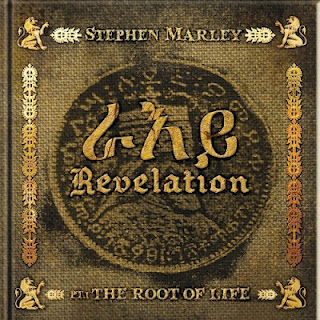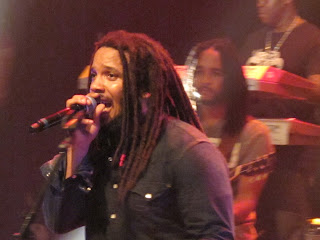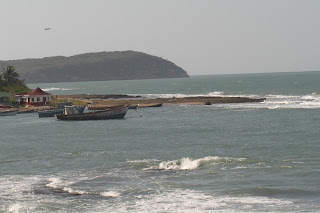Negro With A Hat: The Rise and Fall of Marcus Garvey, by Colin Grant
Reviewed by Patricia Viseur Sellers
The
breadth of Colin Grant’s biography of Marcus Garvey will satisfy, intrigue and
evoke sighs from the reader. The book’s cover revives the emblematic photograph
of Marcus Garvey - stiffly crowned emperor of Harlem - as he presides over the
Universal Negro Improvement Association parade in 1920, when adherence to the
UNIA neared its apogee.
The
framing of the photo, slightly derivative of the nineteenth-century miniature of
Toussaint L’Ouverture with plumed “chapeu”, is iconic. Yet, the frozen imagery
belies the wearer’s adeptness at navigating the tightrope of the colour line.
Grant
relentlessly recounts Garvey’s evolution, starting with his passages within
Jamaica, from St Ann’s Bay and eventually to Kingston. This internal migration forges the
self-taught boy into a young man who becomes not only a printer but also an “elocutionist” for the
Jamaican working poor.
Garvey’s
re-invention was spurred on first as a timekeeper cum newspaperman at the United Fruit Company and then by his
travels to Ecuador, Honduras, Colombia, and Venezuela, where he bore witness to
the indignities suffered by Jamaican migrants alongside other Caribbean and
Central American blacks, toiling as neo-slaves.
Garvey
returned briefly to Jamaica as a “Colon” man, a lauded worker on the Panama Canal,
before setting off to England. In London, Garvey the journalist/student experiences the social
and metaphysical status of the “black man (who) is both visible and invisible”
- the European negritude life. The initial constraints of Old World expatriation
plunges Garvey into books, such as Edward Wilmot Blyden’s racial exhortations
and essays on the mistrust of mixed race Negros, and Booker T. Washington’s treatise,
“Up From Slavery”.
Garvey
re-emerged as what used to be termed a “race man”, albeit not one pinned to the
parochial views of Washington but rather bathed in Pan-Negroism. This archetypical journey abroad and into Garvey’s
own interior expands into a collective calling for racial change and personal
recognition when he lands in Harlem, the Mecca, in 1916. There, amid the
competing racialist philosophers and firebrands seizing upon the political
ripening of the New American Negro(s) freshly seared by World War I, Garvey
preaches/beseeches and soon culls his followers-to-be of the UNIA. Grant aptly
denotes this period the “second coming of Marcus Garvey”.
 |
| Author Colin Grant in Jamaica |
And
it was a glorious existence. Political activism caroused with journalism, the arts
and religious-like acts aimed at the redemption, improvement and resurrection of the Negro Races. However, all gallops toward self-realized
freedom by the UNIA drew confrontations, denunciations and deceit from several other
black organizations, most notably the National Association for the Advancement
of Coloured People.
Grant
details the bitter battles between the NAACP’s revered leader, light-skinned
intellectually enthroned W E B Dubois, and Garvey who championed his working
class, urban and agrarian-based UNIA.
Their philosophical divergences, the UNIA’s Back to Africa program and
the NAACP’s political and social integration platform, frequently erupted into public
intra-black showdowns.
If
the number of adherents signified the utility and worth of a black liberation
philosophy, the UNIA (brimming with its international analysis of racism,
especially concerning the New World Negro) won decidedly. However, there existed no
neat measuring rods nor finishing lines in these intra-racial struggles for the
souls of the Negro, and pithy success was to be discerned by concessions from
the outside, non-black, world.
Moreover, the internecine animosity of Negro
liberation organizations, and other political movements such as socialism or unionism,
fuelled and played into the clutches of the encroaching US governmental
surveillance of the UNIA. Garvey was ultimately charged with fraudulent use of
the US mail, a federal offense.
Grant
charts the UNIA’s demise as a viable commercial enterprise, and Garvey’s demise
as its leader through his trial and imprisonment. The author writes that the imprisoned Garvey lashed
out at his black, half-caste tormentors, especially Du Bois, and censured them
more than he blamed the inimical racist political constraints of the New
World.
 |
| Back to Jamaica but not to Paradise |
The
third act of Garvey’s life, told briefly, comprises his deportation to
Jamaica. This era is significant because
it shows the political gap between the two countries. The UNIA philosophy of
return to Africa appealed to US blacks who lived in a nation structured along racial
apartheid. It, however, proved more
discordant in a still colonial Jamaica that toiled under a caste and feudal
system, administered by appointed British whites.
Broken,
Garvey leaves on his final sojourn to England.
This results in no return to glory, nor, more critically, any
progression of Garvey’s or the UNIA’s philosophical bases.
Grant
honours the reader by granting an unflinching aperture into this devolving,
ruminating Garvey, too bound to his world view. It is an oft told tale of third
acts. Garvey disdains deep self reflection. His evolution has sputtered then
halted. In the aftermath of the Great War, he deftly seized upon former slaves’
seminal yearning for black pride and created an organization that offered a
seemingly permanent solution – return to Africa. Two decades later, he remained
myopically tethered to its untenable execution.
As
Garvey retakes to the Speakers’ Corner in London, the UNIA’s urging of
separation and black colonization of Liberia misreads the new generation of Africans
whose priority was European decolonization. He also misreads the American-based
race movements’ determined struggle for political enfranchisement.
 |
| Colin Grant at a reading in Jamaica |
Thankfully
Grant stopped to direct a word to the reader on that fateful day of the UNIA
parade. Grant observes and avers that if
Garvey were the embodiment of a Roman charioted emperor, at the cessation of
the roar of the crowds, a dutiful slave would have whispered in his ear, “
Remember you are only human’. The advice is not necessarily about scornful
pride, but possibly about the confines of humanness and human clairvoyance.
Upon
concluding the book, one should again glance at the cover to refocus on Garvey’s
eyes, not his hat. Those solemn eyes seemingly gaze at the inevitable unfolding
of history, some of which he prophesied, even in his flawed way, and some of
which may still come to pass as he foresaw.
(Patricia Sellers is an international
criminal lawyer.)
FURTHER READING
Bridges is a remarkable compilation
of 45 stories by writers from more than 15 countries, many of whom are renowned
internationally, and all of whom have a passion for the short story. Edited by
Maurice Lee, dean of the College of Liberal Arts at the University of Central
Arkansas, the anthology represents diverse cultures and is aimed at a global
audience.
Lee
says that the anthology began as a “family affair” to support the writers attending
the 12th International Conference on the short Story in English that
took place in Little Rock, Arkansas, in June of this year. But once he began collecting
the stories, Lee realized that the anthology would be “one of a kind”, with
writers representing the United States, Caribbean islands, France, China,
Indonesia, Singapore, Sri Lanka and other countries.
The stories underline that we are in a “global society, and we now have to
become global citizens”, Lee says. He hopes that the book will assist readers in “embracing
that reality”, and with such an engaging, wide-ranging collection of stories, his wish just may be fulfilled.
For
more information: www.temenospublishing.com.
Black Paris
Profiles
is an e-book written by Monique Wells, an African-American professional who has
lived in Paris for 20 years. The collection of articles provides an up-close and personal view of what life is like for people who have left the United States and the Caribbean to settle in the French capital, with all the challenges of being a "foreigner".
The book profiles 24 contemporary African-American and Afro-Caribbean expatriates (including SWAN's editor Alecia McKenzie) who have launched and developed careers, started families and shaped lives and communities in France, in their homelands, and in other countries as well.
So, how do you give an e-book as a present? All you need to do is go to Amazon.com and click on the button that
says “Give as a gift” in the box at the top of the right sidebar. Then, follow the instructions on the
gift purchase page.
Wells says that it’s
not necessary to own a Kindle device, as free apps are available
from Amazon that allow you to read Kindle books on major types of
computer, tablet, or smartphone. You can
download the app that you need.
POETRY
Snapshots from Instanbul, by Jaqueline Bishop, the Twelve-Foot Neon Woman, by Loretta Collins Klobah (see sidebar), and Jubilation!, edited by Kwame Dawes, are just some of the poetry collections we've also enjoyed this year. Check them out at: peepaltreepress.com.




























